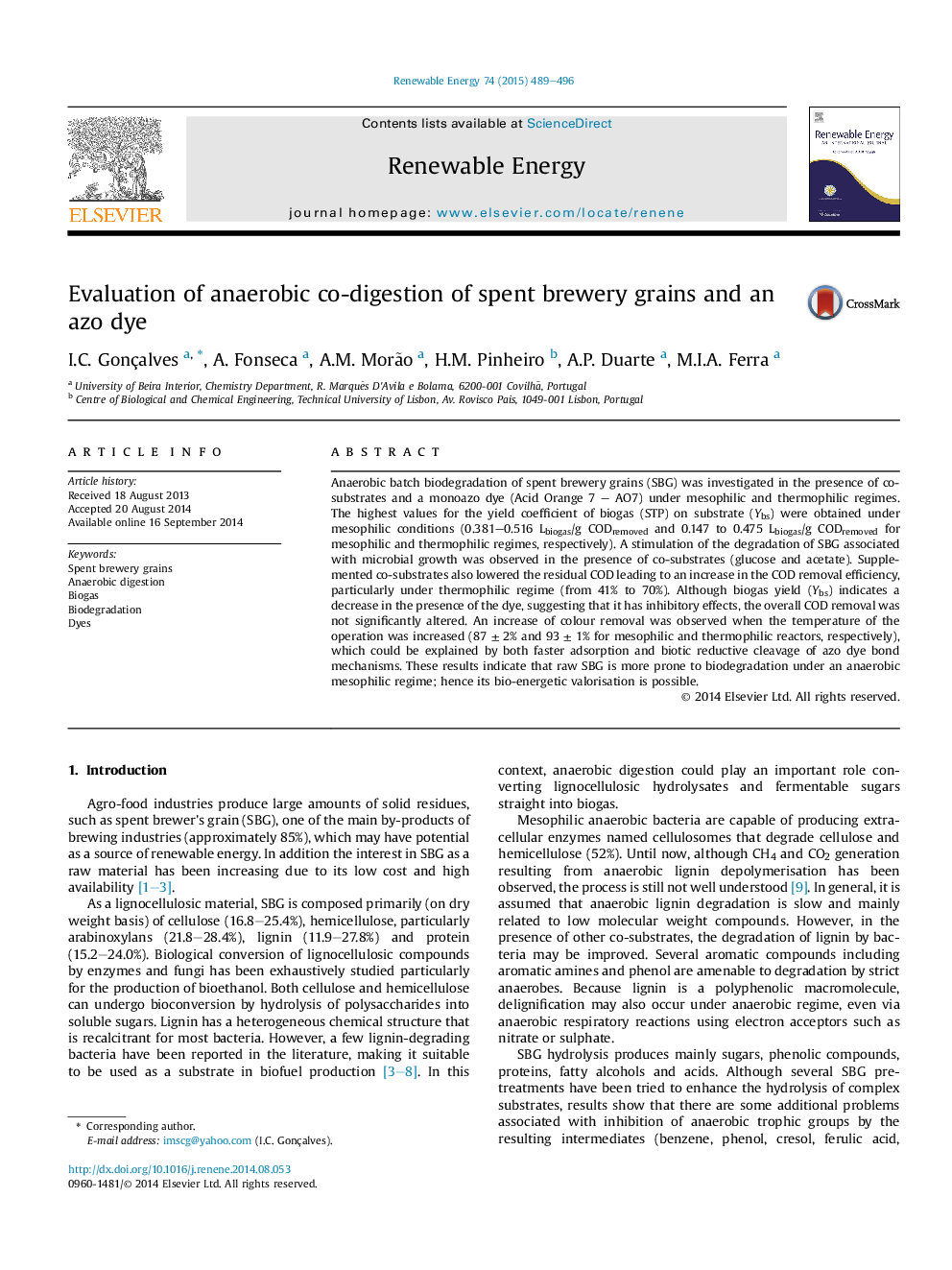| کد مقاله | کد نشریه | سال انتشار | مقاله انگلیسی | نسخه تمام متن |
|---|---|---|---|---|
| 300000 | 512465 | 2015 | 8 صفحه PDF | دانلود رایگان |
• Promoting biogas production from SBG as a renewable source of energy.
• Anaerobic batch digestion of spent brewery grains (SBG) is investigated.
• SBG is more amenable to degradation under mesophilic than thermophilic regime.
• Co-substrate addition leads to an increase of the biogas yield on substrate.
• Co-digestion of SBG and dye exhibits high colour removal efficiencies.
Anaerobic batch biodegradation of spent brewery grains (SBG) was investigated in the presence of co-substrates and a monoazo dye (Acid Orange 7 – AO7) under mesophilic and thermophilic regimes. The highest values for the yield coefficient of biogas (STP) on substrate (Ybs) were obtained under mesophilic conditions (0.381–0.516 Lbiogas/g CODremoved and 0.147 to 0.475 Lbiogas/g CODremoved for mesophilic and thermophilic regimes, respectively). A stimulation of the degradation of SBG associated with microbial growth was observed in the presence of co-substrates (glucose and acetate). Supplemented co-substrates also lowered the residual COD leading to an increase in the COD removal efficiency, particularly under thermophilic regime (from 41% to 70%). Although biogas yield (Ybs) indicates a decrease in the presence of the dye, suggesting that it has inhibitory effects, the overall COD removal was not significantly altered. An increase of colour removal was observed when the temperature of the operation was increased (87 ± 2% and 93 ± 1% for mesophilic and thermophilic reactors, respectively), which could be explained by both faster adsorption and biotic reductive cleavage of azo dye bond mechanisms. These results indicate that raw SBG is more prone to biodegradation under an anaerobic mesophilic regime; hence its bio-energetic valorisation is possible.
Journal: Renewable Energy - Volume 74, February 2015, Pages 489–496
